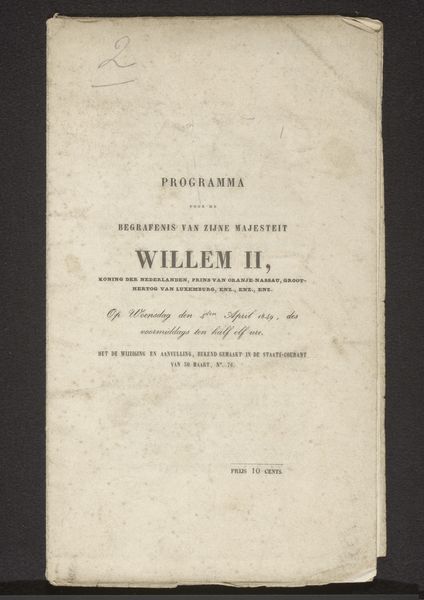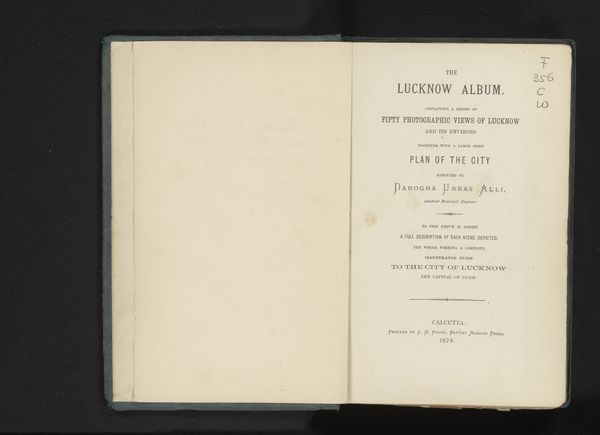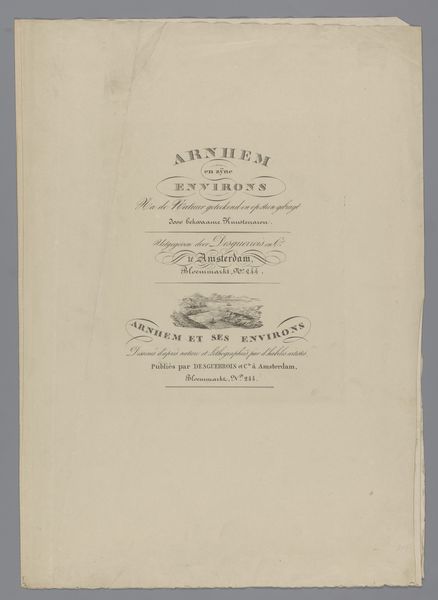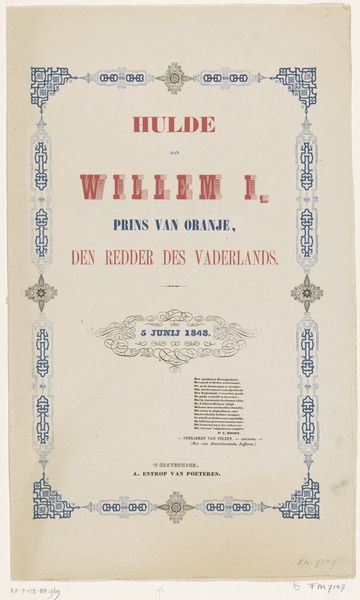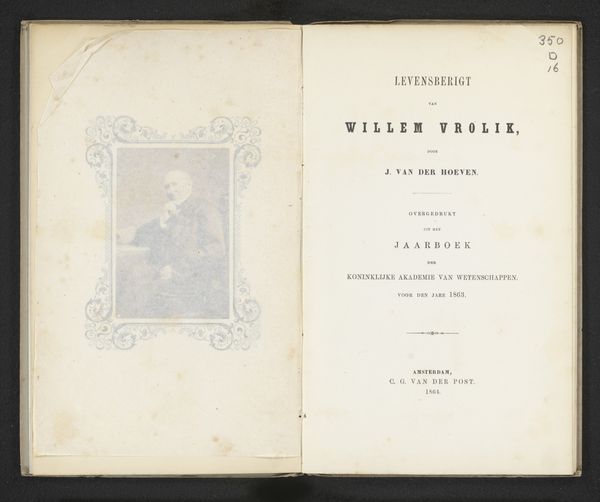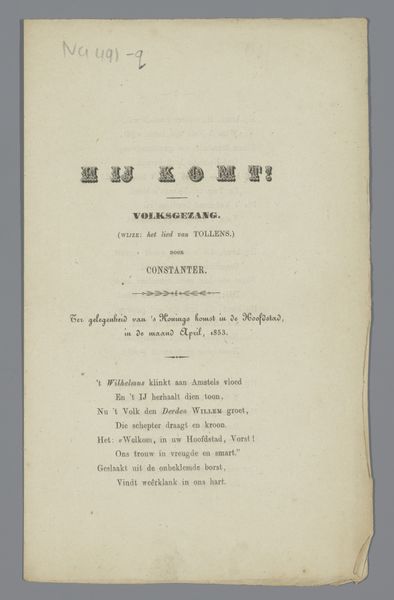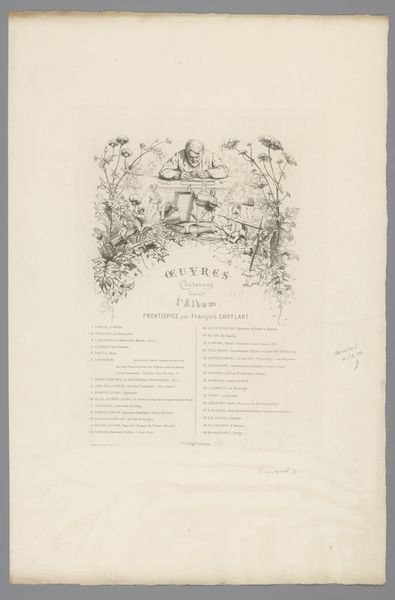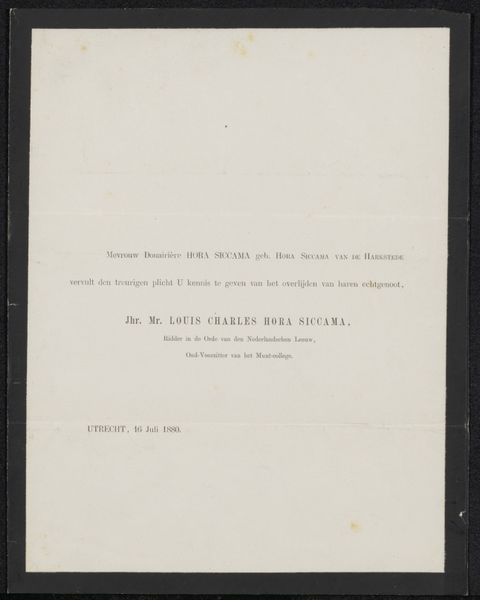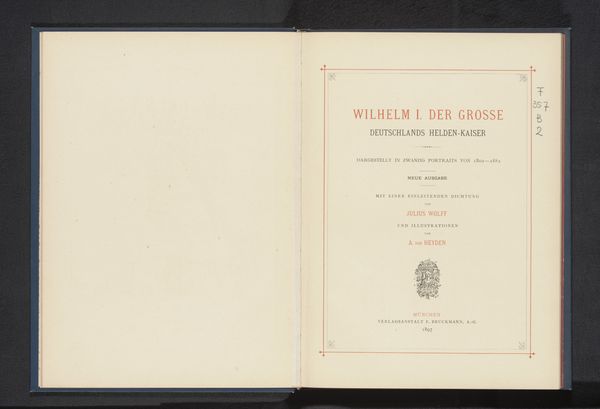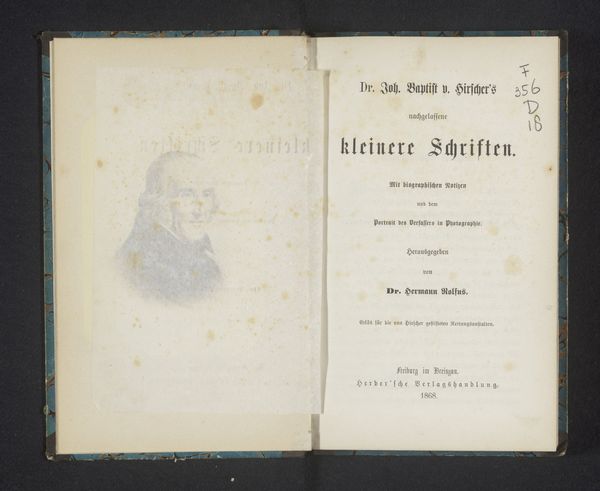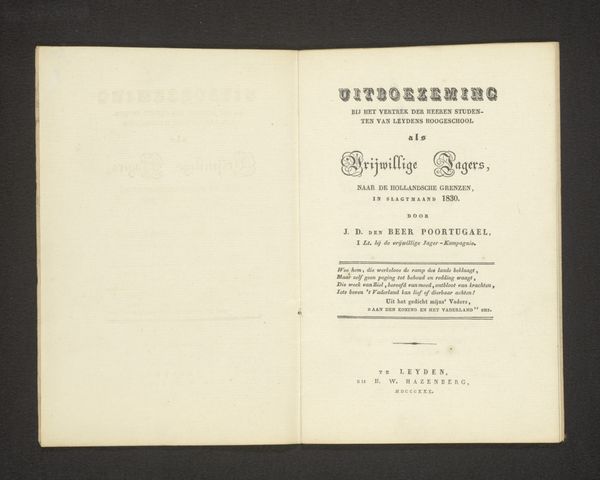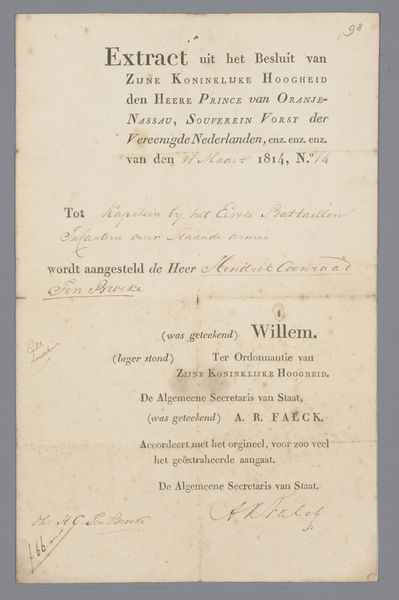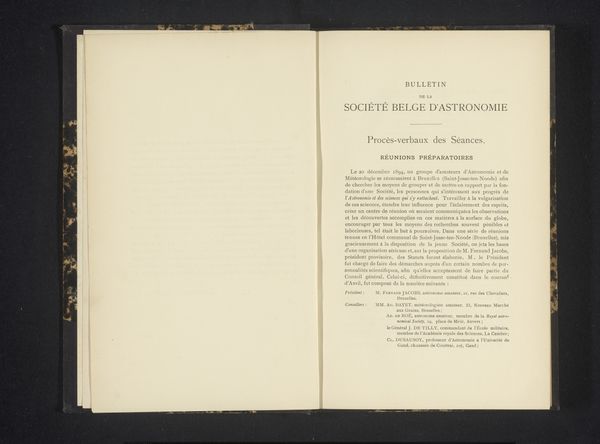
drawing, print, paper, typography
#
portrait
#
drawing
#
type repetition
#
aged paper
#
toned paper
#
homemade paper
#
muted colour palette
# print
#
sketch book
#
paper
#
personal sketchbook
#
typography
#
paper medium
#
historical font
#
columned text
Copyright: Rijks Museum: Open Domain
Curator: What strikes me immediately is the weight of history, you know? This muted colour palette, the aged paper itself...it feels like holding a tangible piece of the past. Editor: That's exactly right. We're looking at a piece entitled "Overlijdensbericht betreffende Willem Linnig (I)," which translates to "Obituary Notice Concerning Willem Linnig (I)." It's believed to be from around 1885 to 1888. It's typography on paper. Curator: An obituary, huh? No wonder there’s this sense of quietude. It's stark and composed, but behind the historical font, I almost feel like Linnig himself had a hand in its making—a last gesture, shaping his own narrative for posterity. A bit romantic, I know, but can't you feel that? Editor: It’s compelling to consider the agency involved in crafting this public declaration. Willem Linnig was an artist himself, so this wasn't just a document, but a deliberate construction. The columned text, the carefully chosen font—all these elements speak to the social conventions of the time. Think of the intended audience, the social circles, how news of death was circulated and received. Curator: There's almost something beautiful in it, even amidst the sadness. The family members listed at the top... like a tapestry, each name is a thread contributing to the larger design, wouldn't you say? And this reminds us of art's unique place within our traditions to create a shared narrative and collective experience, even in moments of profound loss. Editor: I agree. What this reveals is not simply a record of death, but an insight into the performance of mourning and how these printed notices reinforced social bonds. Each detail signifies an aspect of societal customs and structures around grief during that period. Curator: So true. Thank you. Holding onto that... the blend of personal grief within this framework of community acknowledgement... it certainly encourages one to reflect on the rituals we observe to honor the passing of creatives in the present, doesn't it? Editor: Indeed. It really underlines how deeply entwined art, society, and historical practices can be.
Comments
No comments
Be the first to comment and join the conversation on the ultimate creative platform.
